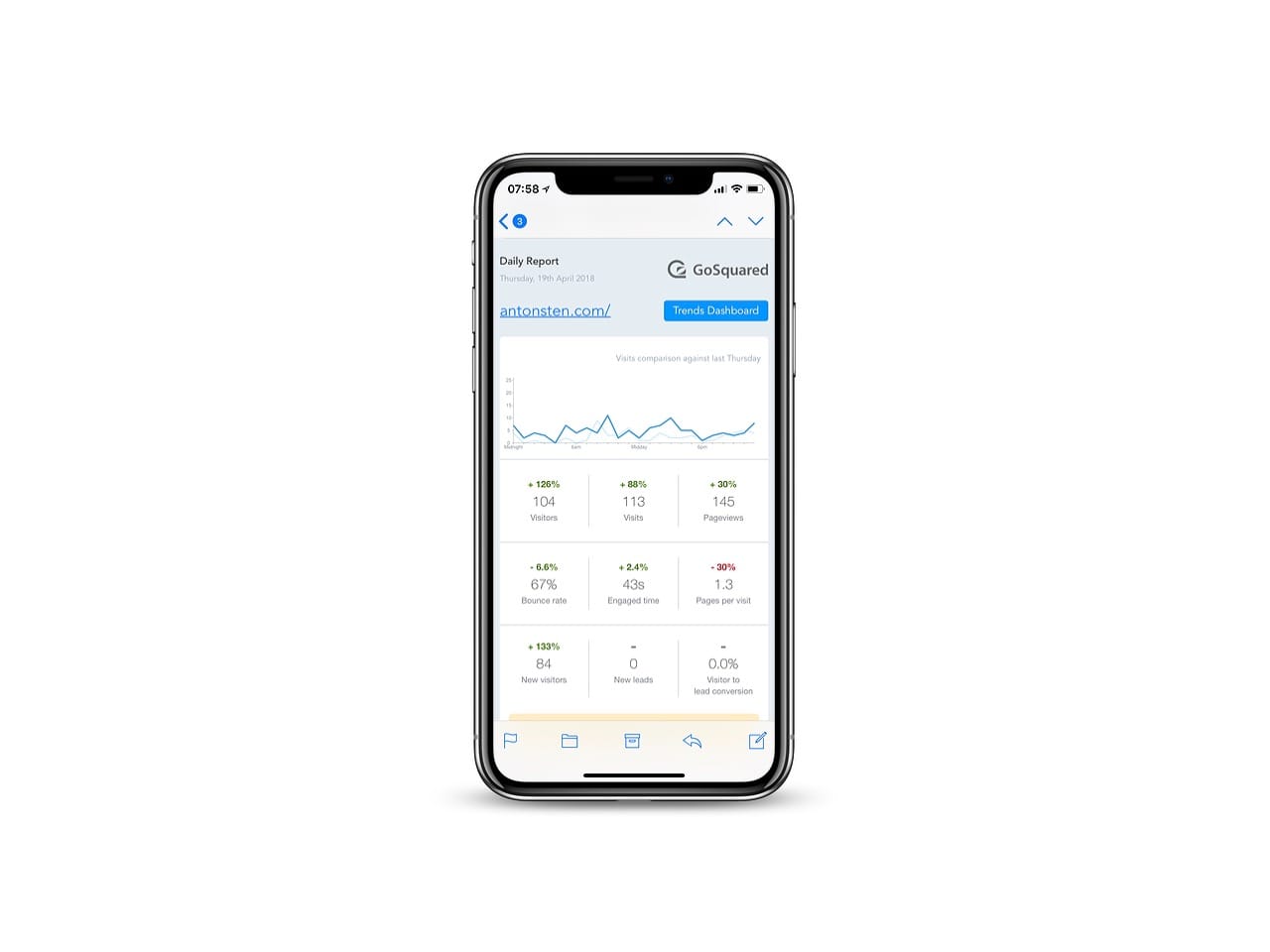Vanity Metrics
April 26, 2018I don’t know about your morning routines, but my mornings are pretty much the same every day. During the week, I get up at around 6am and one of the first things I do is check my phone. I don’t dwell too long, but one of the highlights of my mornings is my GoSquared daily report. It’s a beautifully designed email showing the number of people that visited my website the day before. It give me information like where they are based, what referral they came through (basically on what site they did click on a link to my website), how long they stayed, and so on.

Now you might not think this is weird since my website is an important piece in running my business and a big component of having the role of UX-lead. The higher the number of visitors, the happier I am! It also shows a percentage based on the same day the week before. My mind spills out questions like, “Is this Tuesday better than the week before?” And “Ooh looks like there’s a link to my website from smashingmagazine.com, that oughta be great for SEO right?” Those seem fair and worthwhile, right?
…until I had a revelation
Those all-important numbers don't really matter at all. We’re constantly overwhelmed with numbers justifying or disqualifying every decision we make. Wether it’s visitors on a website, subscribers to a newsletter, numbers of employees, followers on instagram, or upvotes on ProductHunt they all follow the same formula - BIGGER IS BETTER.
It’s a pattern I notice in many places:
- They just raised $360 million!
- His mailing-list has 15.000 subscribers!
- They have a revenue of $20 million!
- She has 300.000 followers on Instagram!
Way back in 2012, Basecamp wrote a post “I heard you like numbers” where they outlined some key metrics for Basecamp. It was all really numbers like those I listed above - they have no meaning at all. There was one metric that made their readers see red. They posted that the one millionth image had been uploaded and that it was a cat image. No big deal, right? Well, it turns out the users were disturbed that Basecamp could see all the images they uploaded. While Basecamp later argued that they had only seen the name, cat.jpg, the damage was already done.
Basecamp (of which I’m a huge fan) later posted a big apology and straight out admitted that they made a mistake.
The lesson here is that it’s easy to get caught up in all the data and lose perspective on what is real. With Google Analytics, Salesforce, and all of the other tools, we’re constantly exposed to a huge amount of information. Ten years ago we had access to maybe 10% of what we do today, so it’s no surprise that we’re struggling making sense of it all.
What’s your end goal?
The goal of my business is to allow me to do work that I enjoy doing while being able provide for my family. A very minor percentage of new clients come through my website as 90% of my clients are all through word-of-mouth and/or referrals. Now while they may visit my website before they reach out, there’s very little connection between my website’s visitor count and the amount of new clients talking to me.
The goal of my blog is to force myself to think deeper about design and user experiences in particular. I love sharing these posts with you and sometimes that leads to some pretty big reader numbers. However, those numbers were never the goal; they are actually the result of writing something that challenged myself AND the reader to think differently about the topic.
Understanding the purpose of what you do is important in making sure you’re tracking the right data. Revenue is a pretty boring metric until the data focuses on profits. Instagram follower numbers don’t matter if no one likes your posts. Visits to a website mean nothing until you can see correlation to higher conversions. So let’s stop playing the vanity metrics game and start using the collected data as a tool to our end goals: sustained profit from a great product people love, growing a relationship with your follower, and higher conversion rates of visitors buying your product/services. After all, we are just people working with people.
Learn how to create better user experiences
Join thousands of designers, developers, and product people from companies like Amazon, IDEO, Figma, and Shopify. A couple of times a month depending on life.